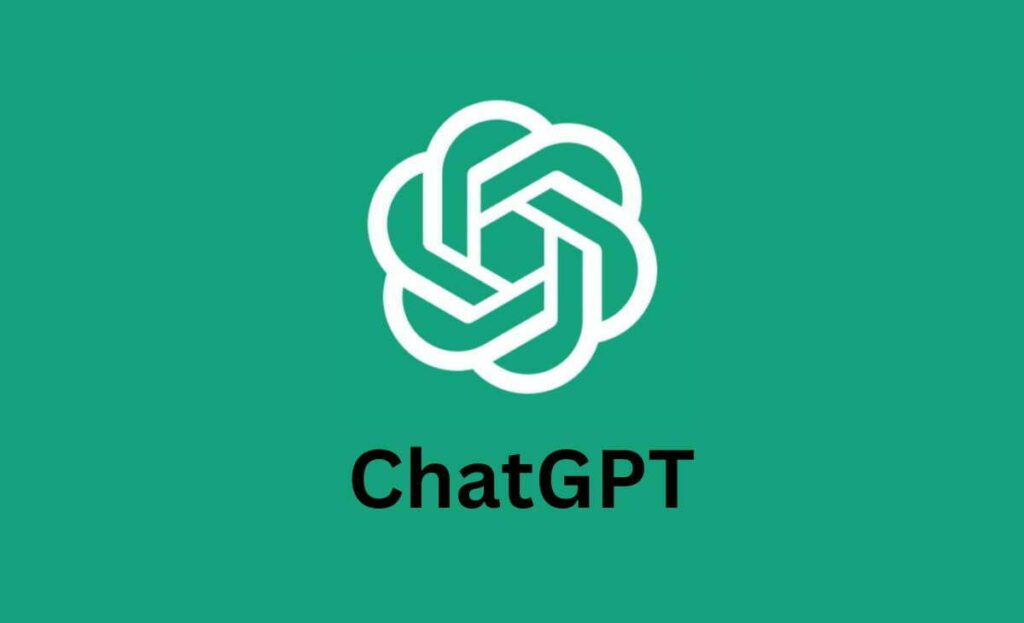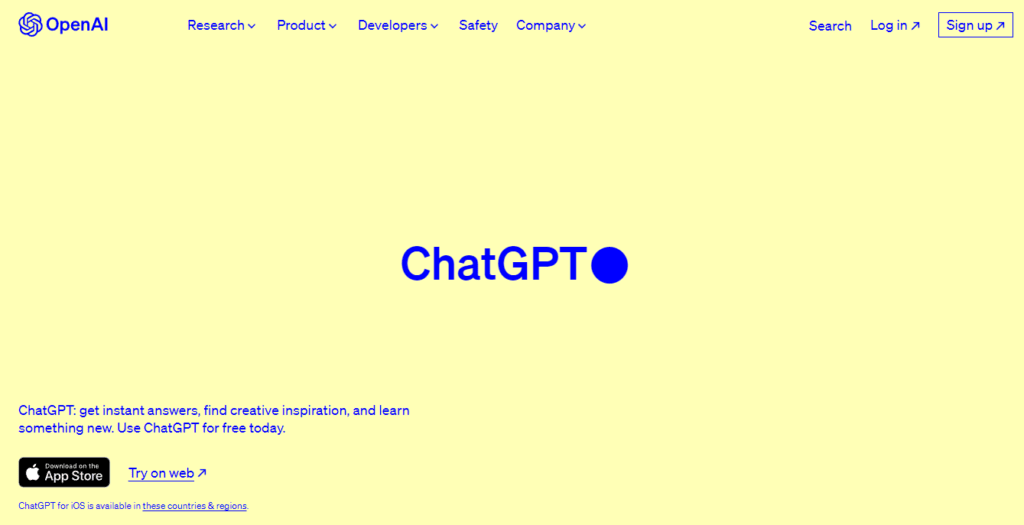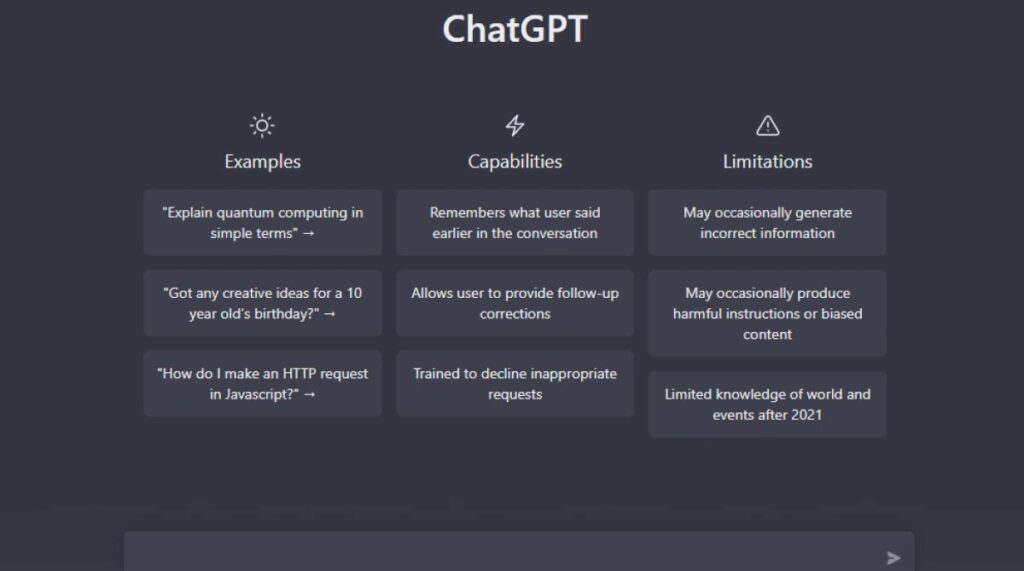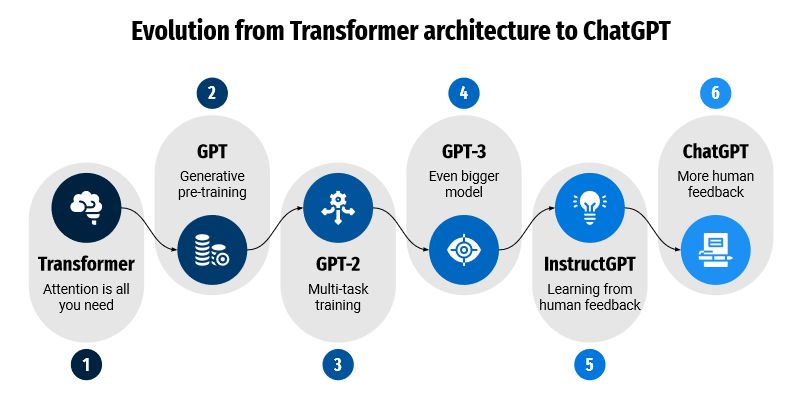ChatGPT took the world by storm in late 2022 with its impressively human-like conversational skills. But what exactly is this AI chatbot that seems to have captivated the public imagination? This detailed guide will dive into what powers ChatGPT, how it works, its capabilities, limitations, applications, and the future outlook for this game-changing technology.


Table of Contents
ChatGPT Origins: Born at OpenAI
ChatGPT was created by the San Francisco-based artificial intelligence research company OpenAI and launched publicly on November 30, 2022.
OpenAI was founded back in 2015 as a non-profit AI research organization led by Sam Altman, Greg Brockman, Ilya Sutskever, and others. Their goal was to advance AI in a way that benefitted humanity as a whole.
After years of research into generative AI models like GPT-2 and GPT-3, OpenAI’s researchers turned their focus towards crafting an AI system capable of natural dialog. Leveraging their existing transformer-based language models, they trained the system called ChatGPT to engage in coherent, knowledgeable conversations on virtually any topic.


The key training approach behind ChatGPT includes:
- Leveraging massive general-purpose language models like GPT-3
- Fine-tuning the models on human conversational data
- Reinforcement learning from human feedback to improve responses
- Extensive safety testing to align with human values
This training regimen resulted in ChatGPT – a conversational agent with unprecedented human-like interaction abilities across diverse topics, while optimized to avoid inappropriate, dangerous or unethical responses.
After months of internal testing and refinement, ChatGPT was finally unveiled to the public via OpenAI’s API in November 2022. It immediately went viral thanks to its versatile conversational skills spanning facts, explanations, reasoning, and synthesis of ideas.
So despite some public misconceptions, ChatGPT is an original AI system conceived and built by researchers at OpenAI. It builds upon OpenAI’s prior work on transformers and generative language models.
What Makes ChatGPT So Capable?
ChatGPT leverages a number of advanced AI techniques that enable its conversational abilities:
Transformer Neural Networks
Instead of RNNs or LSTMs, ChatGPT is powered by a transformer architecture. Transformers analyze relationships between all words in a sentence using attention mechanisms. This allows modeling long-range dependencies critical for understanding contextual dialogue.
Generative Pre-Training
Like GPT-3, ChatGPT is pre-trained on massive text corpora to learn statistical relationships through predictive language modeling. Trying to predict the next token teaches the model nuances of natural language.
Reinforcement Learning
ChatGPT is refined through reinforcement learning from human feedback ratings. This tunes the model to favor coherent, helpful responses aligned with human preferences.
Safety Testing
Extensive testing under simulated scenarios trains ChatGPT to avoid unsafe or unethical behavior. This tuning aims to make the system stay true to its goal of benefiting users.
Combined, these techniques enable ChatGPT to conduct knowledgeable, harmless conversations across domains ranging from technology to ethics to cooking!
Is ChatGPT a Generative AI?
Check First what is Generative AI in this link.


Is ChatGPT a Generative AI?
Yes, ChatGPT is considered a generative artificial intelligence, though it is not based on diffusion models like DALL-E 2 and other image-generation AIs.
ChatGPT produces novel text content like conversations, stories, code, poetry, etc. based on the given prompts and conversation history. So it fits under the broad umbrella of Generative AI systems.
Specifically, ChatGPT leverages autoregressive language models like GPT-3 that are trained to predict the next word in a sequence. This allows generating coherent text iteratively from the predicted word probabilities.
So while ChatGPT does not utilize diffusion for image generation, it is considered a generative model for its ability to produce completely new text content parametrized on the given user input.
What Type of Generative Model is ChatGPT?
As mentioned above, ChatGPT is an autoregressive language model, meaning it predicts the next token probabilistically based on the previous context.
Autoregressive models like GPT-3 are trained on massive text corpora using self-supervision. By trying to guess the next token, they learn relationships and nuances of natural language from the training data patterns.
ChatGPT leverages this approach by fine-tuning such a pre-trained language model to strengthen its conversational skills specifically. The model is further improved using reinforcement learning from human feedback.
What are ChatGPT’s Conversation Capabilities?
ChatGPT’s versatile conversational skills stunned millions of users. Here are some of its capabilities:
- Converses casually using natural language and fluid responses
- Answers follow-up questions adapting to context and history
- Provides in-depth explanations with sources, examples, and reasoning
- Admits ignorance politely if asked about unavailable info
- Refuses unethical, dangerous, illegal, or inappropriate requests
- Generates poems, articles, stories, code, and other coherent content
- Translates languages, summarizes texts, solves math problems
- Roleplays conversations provide different perspectives
- Discusses ethics, philosophy, cultures, and complex concepts
These characteristics make ChatGPT incredibly useful for education, writing, research, explanation, problem-solving, and more. However, it does have limitations currently.
ChatGPT’s Strengths and Weaknesses
As with any technology, ChatGPT comes with both advantages and weaknesses:
Key Advantages
- Extremely conversational ability in virtually any knowledge domain
- Provides granular, contextual explanations citing sources
- Speed in generating written content like text, code, articles
- Always available 24/7 unlike human assistance
- Highly customizable by users based on examples
Notable Weaknesses
- Can generate plausible-sounding but false information
- Knowledge limited to 2021 training data cutoff
- No external memory so can’t recall previous statements
- Takes statements literally rather than grasping the implied meaning
- Struggles with mathematical reasoning despite conversational fluency
By understanding these current strengths and limitations, users can gainfully apply ChatGPT where it shines while avoiding pitfalls. Future iterations will likely overcome weaknesses around memory and factual accuracy.
Current and Future Use Cases
ChatGPT’s conversational nature makes it surprisingly versatile across many domains:
Education – Tutoring, helping students learn concepts in tailored ways, cresting study materials and flashcards.
Writing Assistance – Drafting emails, essays, articles, stories, poetry, code, and more based on outlines.
Research – Summarizing sources, generating citations and bibliographies, and creating research briefs.
Customer Support – Providing technical support, answering customer questions, and upselling products.
Market Research – Designing surveys, conducting interviews, and analyzing open-ended responses.
Digital Assistant – Scheduling, reminders, travel tips, personalized recommendations, and more.
Content Creation – Writing SEO-optimized website content, social media posts, and YouTube video scripts.
As the capabilities improve over time, ChatGPT could become integral to workflows across many industries and roles.
The Evolution of ChatGPT


ChatGPT already displays remarkable conversational ability, but what does the future look like?
- New techniques to improve context, reduce repetition and increase factual accuracy
- Integration with external databases to incorporate real-time knowledge
- Support for user identity, preferences and conversation history tracking
- Ongoing optimization of ethics, safety and social good
- Accessibility through chat interfaces, apps, APIs and integrations
- Lower costs enabling widespread access and adoption
Exciting times lie ahead as conversational AI like ChatGPT becomes more powerful, trustworthy, and versatile!
Try ChatGPT Yourself!
I hope this comprehensive guide provided clarity on what ChatGPT is, the technology behind it, its current abilities and limitations, use cases, as well as an outlook on the future. Go try having conversations with ChatGPT yourself at chat.openai.com to see just how capable today’s conversational AI already is! Let me know in the comments about your most interesting ChatGPT interactions.
